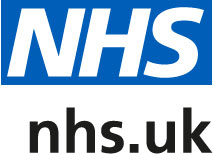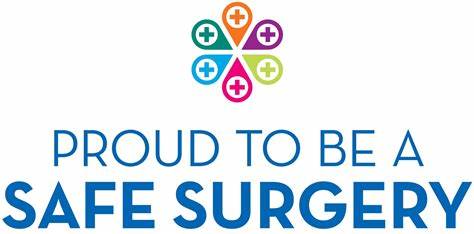St Luke's Surgery (Dr Chauhan, Dr Ghosh & Dr Pillai)
Pinfold Health Centre, Field Road, Bloxwich, Walsall, WS3 3JP
Telephone: 01922 775136
Sorry, we're currently closed. Please call NHS 111

Access to Tirzepatide (Mounjaro) for Weight Management in the Black Country Christmas & New Year Opening Times Need Antibiotics?…… Pharmacy First Missed Appointments Get the NHS APP Measles cases are rising in England New Specialised Pharmacist Service COVID Symptoms?….Please wear a face covering. National No Smoking Day Help your Heart this Valentines Stop Smoking New Years Resolution Accredited Veteran Friendly GP Practice Lloyd George digitisation Movember – Mens Health Access to Medical Records Online Stoptober – Stop Smoking Together.. Before entering the practice, please wear a mask…. Community Pharmacy Consultation Service (CPCS)
Minor Illness Treatment
Signs and Symptoms; NHS Symptom Checker: –
NHS Symptom Checker | Use the Right Service
From the 1st February 2024, chemists will be able to provide treatment such as antibiotics for the following:
- Uncomplicated urine infections in women aged 16-64 years
- Shingles 18 years and over
- Impetigo 1 year and over
- Infected insect bites 1 year and over
- Sinusitis 12 years and over
- Sore Throat 5 years and over
- Earache 1-17 years
Please speak to your nominated chemist for more information.
Back Pain and Sciatica
Sudden onset back pain is usually due to lifting and straining which causes a sprain (partial tear) of the ligament or disc in the back. (Remember when lifting to bend your knees and keep your back straight) The sprain almost always heals naturally in 4 to 8 weeks and there is nothing we can do to make it heal any faster. Over the counter pain killers may help from your local chemist. There is no evidence that bed rest makes healing any quicker but it would be reasonable to avoid heavy lifting or anything that hurts.
When a disc ‘slips and squeezes’ a nerve, the pain goes all the way to the foot/toes. This disturbing nerve pain which may be associated with pins and needles, numbness, or even weakness is called sciatica.
In the vast majority of people sciatica resolves itself in 6 to 18 months. This is because, in a simplistic explanation, the disc loses its water and shrivels, thus reducing the pressure and chemical irritation on the nerve. While natural cure takes place, you may function better with pain killers, epidural injection, or physiotherapy. If you develop loss of feeling in the areas between the legs(saddle area), or lose bladder sensation or control you must contact the doctor immediately
Chicken Pox
The rash appears as crops of small red spots in small red patches, often near the hairline, on the forehead or on the trunk. The spots become larger, yellowish, filled with fluid and are itchy. The blisters may rupture or dry up to form a scab or crust which finally falls off leaving a slight dimple. This normally takes about 4 days. Crops of new spots appear each day and go through this evolution until the body’s immunity overpowers the virus and prevents any more spots from developing. The spots already developed will go through the evolution. Virus particles are present in the crusts and are safe from attack by the body’s immunity. Patients will be infectious until the last crusts have dropped off. Calamine lotion and cool baths can help with the itching. If your immunity is reduced by medicines such as steroid, anticancer medicines, operations such as spleen removal and general debility in old age the infection maybe worse then usual. Please contact the practice as antiviral drugs maybe required.
Coughs and Colds
These are commonly caused by viruses and, unfortunately, there is no cure. Antibiotics are of no use. Treatment usually consists of taking recommended doses of Paracetamol (Calpol) and drinking fluids. The illness usually lasts 7-10 days. The dry cough may persist for 2 to 3 weeks especially in smokers. Cough syrups don’t generally shorten the duration of the cough but over the counter medicines may help other symptoms like headache, runny nose, sore throat, body ache etc. Over the counter medicine can be purchased from your local chemist. A pharmacist will triage you and advise the best treatment. Antibiotics are available for some infections. If the cough persists and you are coughing up phlegm, become breathless, or feel unwell you should see the doctor.
IF YOU HAVE COVID PLEASE DO NOT ATTEND THE PRACTICE & ISOLATE AWAY FROM OTHERS IF POSSIBLE!
Fever
A raised temperature is natural with most illnesses and is generally harmless. The body raises its temperature to help fight off bugs. Simple measures will make you more comfortable. However, in small children it is important to stop the temperature rising too quickly by giving paracetamol syrup (check dosage). Also, keep the room cool and don’t wrap the baby up. Regular cool drinks and sponging down with a cool flannel is effective. Ibuprofen (Neurofen) can also be used in fever but paracetamol is safer. Please speak to your local chemist for over the counter medicines. If your child is getting worse or you are concerned please speak to a Receptionist or NHS 111.
IF YOU HAVE COVID PLEASE DO NOT ATTEND THE PRACTICE & ISOLATE AWAY FROM OTHERS IF POSSIBLE!
Living With Long Term Illness
Unfortunately we do not have a cure for long term conditions but we can support you in managing your symptoms. Self management is the best medicine:
– Taking care of your body by eating a balanced diet,
– Adapting your everyday activities to be active as much as possible,
– Talking about your mental health. Long term conditions can make patients feel low in mood.
We offer annual reviews at the Practice for patients suffering with a long term condition. Together we can put a care plan in place.
Childhood Rashes
Most rashes are due to viral illnesses. You can use a glass and apply pressure to the rash to check for meningitis. When applying pressure a viral rash should disappear. The rash of meningitis is a tiny bleed in the bottom layers of skin. It does not blanch or disappear under pressure. If your child is well with a rash, but fails to settle within 48 hours, then seek medical advice. If your child is ill with a rash, you should seek medical advice as soon as possible. Please warn the receptionist that your child has a rash and may be infectious. We can isolate you away from other patients to prevent passing infectious illnesses onto vulnerable patients.
Stomach Ache
Most attacks are not serious and are caused by indigestion and wind. Usually a hot water bottle and antacid such as milk of magnesia will help.
If the pain is severe or lasts more than 8 hours or is getting worse you should consult your doctor. If your pain is so severe that you struggle to walk please go to A&E to rule out appendicitis.
Vomiting & Diarrhoea
In adults and older children, diarrhoea and vomiting will, usually get better on its own within 36 hours. Treatment consists of replacing the fluid that you have lost and resting the digestive system by having no solid food for 24 hours. Clear fluids should be taken as sips every few minutes. Keep drinking as often as possible as research shows that the body retains 30% of the fluid even if you vomit straight after drinking. Sachets of powder such as Dioralyte are available over the counter from the local chemist. Try to isolate from others for 48 hours after vomiting or diarrhoea as it can be infectious.
If the diarrhoea contains blood or there is severe pain or high fever you should inform your doctor. In this case, a stool sample brought in before 2pm would be helpful as it can be sent to the lab for testing. Diarrhoea and vomiting in babies should be treated with caution. The doctor will be happy to advise you over the phone and arrange to see the child if necessary.
Warts and Verrucas
Warts and molluscum are caused by viruses making the surface cells of the skin multiply and form a bump. Usually warts or verrucas will go away in 6 to 24 months as the body develops immunity and destroys the virus infested cells. Natural cure also ensures best cosmetic result. Treatment involves destroying the excess cells forming the bump by chemicals (creams) or freezing (liquid nitrogen – cryotherapy)
Research has shown that topical applications (Bazooka/Cuplex/Salactol/phenol) are more effective than cryotherapy if applied for sufficient length of time, usually 4 to 6 weeks. Topical applications have to be carefully applied to the top of the wart while protecting the surrounding normal skin with Vaseline/paraffin. If the application spreads to the normal skin it will damage a layer of skin cells and cause an inflammation ( as it usually happens on the sole if one starts walking after applying the cream, it is squeezed on to the normal skin) Please ask for further advice and buy these topical treatments over the counter at a pharmacy.
Should I send my child to school?
- Chickenpox, German measles (rubella), Measles – Exclusion for five days from onset of rash.
- COVID – Speak to your child’s school to ask about their Isolation Policy
- Whooping cough (pertussis), Scarlet fever – Exclusion for five days from starting antibiotics.
- Mumps – Exclusion for five days from onset of swollen glands
- Diarrhoea – Exclusion until condition has settled for 48 hours
- Impetigo – Exclusion until lesions crusted or healed
- Scabies – Exclusion from school until treated
- Hepatitis/jaundice – no need for exclusion of well older children with good hygiene who would have been much more infectious prior to the diagnosis. Exclusion for five days from the onset of jaundice or stools going pale for the under five years old or where hygiene is poor.
Conditions where there is no recommended period to be kept away from school if the child is well :
Influenza; Cold Sores (HSV); Molluscum Contagiosum; Ringworm (Tinea); Athlete’s Foot; Hand, Foot and Mouth Disease; Roseola; Slapped Cheek Disease (Parvovirus); Warts and Verrucae; Conjunctivitis; Glandular Fever; Head Lice; Non-Meningiococcal Meningitis; Thread Worm; Tonsillitis
Opening Times
- Monday
08:00am to 06:30pm - Tuesday
08:00am to 06:30pm - Wednesday
08:00am to 06:30pm
We close on the second last Wednesday of the month for staff training. Please phone Ournet 01922 501999 if you require assistance - Thursday
08:00am to 06:30pm - Friday
08:00am to 01:00pm
If you need assistance between 1:00pm to 6:30pm, please call Ournet on 01922 501999 - Saturday
CLOSED - Sunday
CLOSED






